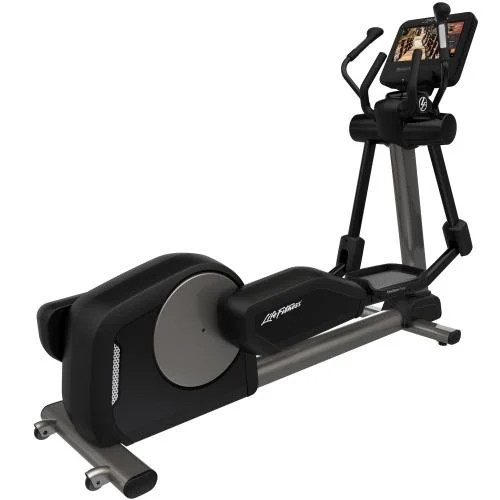Lower back pain is a common condition that affects over three million Australians (1) with estimates suggesting that 80% of the population will experience it at some point during their lives. For fitness professionals, this presents a unique challenge – how to incorporate cardio exercise into their clients’ routines while also taking care not to aggravate their lower back pain, potentially turning them off exercise forever. Fortunately, there are several options for both cardio exercises and machines that can be used safely and effectively by those suffering from lower back pain. In this article, we’ll explore the best options for cardio exercise, whether cardio can exacerbate lower back pain and the best choice of cardio machines for those suffering from lower back pain.
Lower back pain can be caused by anatomical origins and conditions; intervertebral discs, facet joints, nerve root impingement, degeneration from “wear and tear” or age, inadequate core muscle strength, poor posture, a sedentary lifestyle, and usually a combination of any of these factors.
Which cardio exercise is best for lower back pain?
The best cardio exercise for someone with lower back pain will depend on the individual and the severity of their pain. However, there are several exercises that are generally considered safe and effective for those with lower back pain. (2)
- Walking is one of the best cardio exercises for people with lower back pain, as it is low-impact and easy on the joints. Walking can also help improve posture and strengthen the muscles in the lower back, which can help alleviate pain over time while still being weight-bearing in nature, which helps to support bone density.
- Cycling is another excellent option for people with lower back pain as it is low-impact and can be done either outdoors or on a stationary bike. It’s important to ensure that the bike is set up correctly, with the seat at the right height and distance from the handlebars, to avoid putting unnecessary strain on the lower back.
- Swimming is also a great choice for people with lower back pain, especially if they find walking painful. As a low-impact exercise, swimming can help improve flexibility, strength, and cardiovascular health. The buoyancy of the water also reduces pressure on the lower back and gentle movement in the water can add an analgesic effect.

Photo by Kindel Media
Will cardio exercise make lower back pain worse?
While it’s understandable for both trainers and clients to be concerned that cardio exercise may exacerbate lower back pain, the truth is that regular exercise can actually help alleviate pain and prevent future episodes. However, it’s important to approach exercise carefully and gradually and to work with a qualified fitness professional or healthcare provider to develop a safe and effective exercise plan. One of the reasons that exercise can help ease lower back pain is that it can strengthen the muscles in the lower back, as well as the surrounding muscles in the core, hips, and legs. Strengthening these muscles can help provide support to the spine and reduce the risk of further injury or strain. The other benefit of cardio exercise is weight loss. Carrying extra weight, especially in the abdominal region, places increased pressure through the lower back, potentially worsening back pain symptoms therefore weight loss or maintenance should at least be discussed with overweight clients suffering from lower back pain, keeping in mind that pain can be a barrier to exercise.
It’s also important to choose the right type of exercise and to progress gradually. Low-impact exercises like walking, cycling, and swimming are generally safe for people with lower back pain, but high-impact exercises like running and jumping may put too much strain on the lower back. Listen to the body and adjust an exercise routine as needed. If a client experiences pain or discomfort during exercise, it’s important to stop and rest and seek guidance from a healthcare professional.
What's the best cardio machine to use when you have lower back pain?
When it comes to choosing a cardio machine for someone with lower back pain, the most important factor is to choose an option that is low-impact and won’t put unnecessary strain on the lower back. Here are some of the best options:
- Stationary bike: A stationary bike is great for people with lower back pain, as it is low-impact and allows for a controlled range of motion. It is important to ensure that not only is the seat adjusted correctly to avoid putting strain on the lower back but the handlebars as well to allow for correct posture while riding. The bike is a great option as one can adjust the speed and resistance while increasing the distance to progress difficulty. Interval training is also a great training mechanism to increase heart rate and intensity.
- Elliptical trainer: An elliptical trainer is another low-impact option that can be effective for people with lower back pain. It provides a full-body workout that can help improve cardiovascular health and strength without putting excessive strain on the lower back. As with the stationary bike, it’s important to ensure that the machine is set up correctly, with proper posture and positioning.
- Rowing machine: A rowing machine can also be a suitable option for people with lower back pain. It provides a low-impact full-body workout, making it a safe choice. However, it’s important to maintain proper technique and posture to avoid any unnecessary strain on the lower back and keep the flywheel’s resistance level low.
- Stair climber: A stair climber is a low-impact option that can provide a challenging workout for people with lower back pain. An added benefit of the stair climber is that it helps to build glute strength and strong glutes take the pressure off the lower back.


Images sourced from Life Fitness
In conclusion, cardio exercise can be safely and effectively incorporated into a fitness routine for people with lower back pain. Low-impact exercises such as walking, cycling, swimming, elliptical training, rowing, and using a stair climber can be effective options for people with lower back pain. It’s important to approach exercise gradually and to work with a qualified fitness professional or healthcare provider to develop a safe and effective exercise plan. By incorporating safe and effective cardio exercises and machines into their routine, people with lower back pain can continue to exercise, and improve their cardiovascular health, strength, and overall well-being.
References
- “Back Pain” Better Health Channel, Victorian Government, 28 January 2016
- “Physical Activity” – Arthritis Australia Information sheet, 2007
Thanks to Caroline Jones for this article.
Caroline is a physiotherapist who is passionate about using exercise as medicine and getting patients moving, especially those living with chronic conditions.
She is currently undertaking postgraduate research, studying the effects of exercise on women following treatment for gynaecological cancer and consequent lymphoedema. She also holds a Level 3 Certificate in Personal Training, owns a CrossFit box with her husband, and enjoys being a below-average runner.

Guy Leech’s Tips to Get a Killer Core at Home
Australia’s number one fitness guy and former World Ironman Champion, Guy Leech, shares his top tips on how to strengthen and shred your core, sans the serious gym equipment. “The truth is, even if you don’t have an ounce of fat, you can still have a weak core,” explains Leech, who was once named as

Common Pre and Post Natal Exercise Myths
Having worked with mums both pre and post natal for almost a decade, I have discovered that there are many myths around appropriate ways to exercise during pregnancy and recover postnatally. In this article I offer a different perspective on a number of these myths, providing tips for you to move forward with your clients

Elite Performance Testing for the Everyday Athlete
In an Australian first, Elite NRL Strength & Conditioning Coach, Aaron Sculli is bringing performance testing to the masses. Whether you are training for a sport, looking to optimise your performance in the gym, or looking to understand your injury risk profile, this ground breaking lab will give you an insight to up your game.

How Can Altitude Training Help Increase Fat Burning, Reduce Insulin & Improve Fitness?
Simulated altitude training continues to grow rapidly in Australia as a value-adding service to members or clients in all types of gyms, studios and fitness and performance centres. What are the advantages of training in a simulated altitude environment? Altitude training is not only for elite sports performance, but offers benefits for everyday health and

How will weight loss drugs affect the fitness industry in Australia?
Unless you’ve been living under a rock, you’ll have heard about the massive uptake of weight loss drugs across the globe. Ozempic is by far the most dominant brand of GLP-1 agonist, but no doubt there will be an increasing number of competing drugs hitting the market in the near future. The impact weight loss

5 Steps to Prevent Winter Weight Gain
Any health professional who works in health and fitness knows the occupational hazard that arises at this time of year – cancellations – a lot of them explained by weak excuses such as, “It’s too cold”, “I am not feeling motivated”, “I am just going to wait until the weather gets better”. Unfortunately, when we
